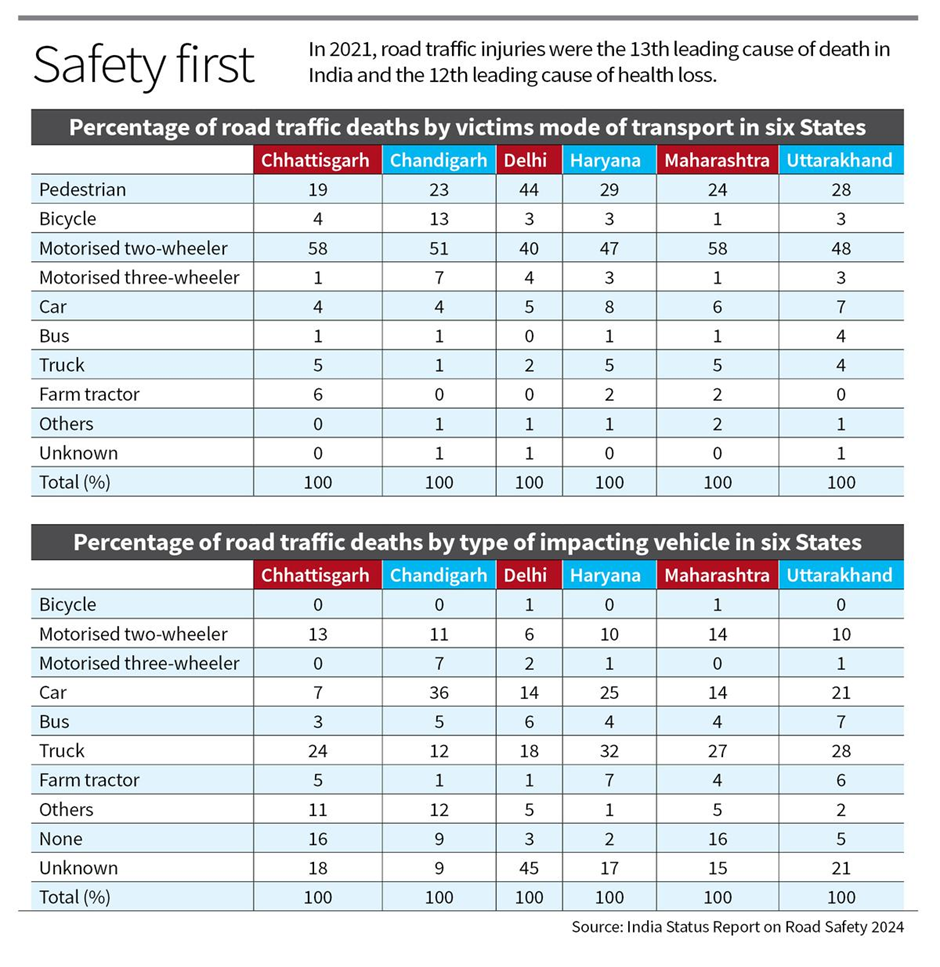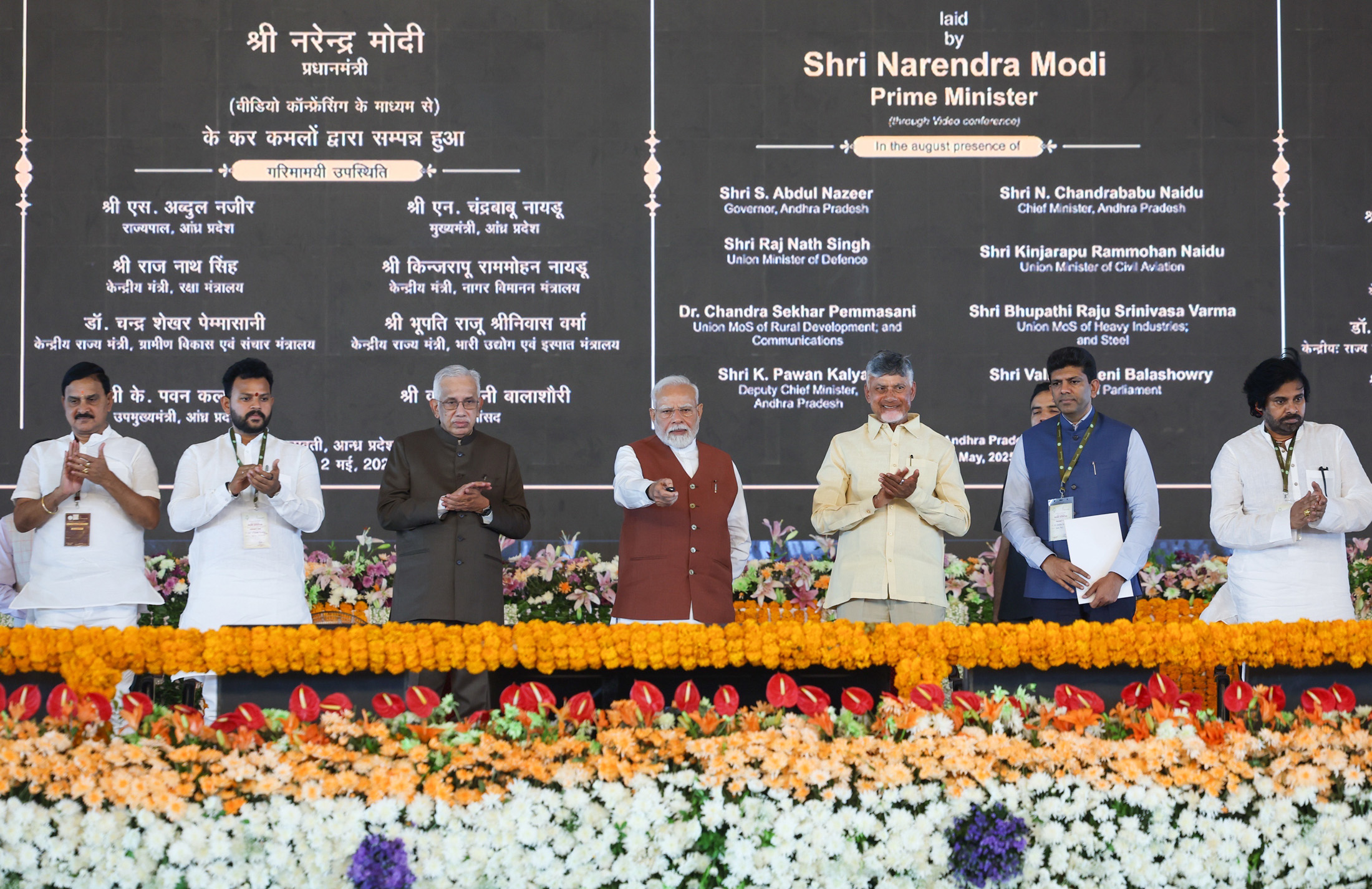- Courses
- GS Full Course 1 Year
- GS Full Course 2 Year
- GS Full Course 3 Year
- GS Full Course Till Selection
- Online Program
- GS Recorded Course
- NCERT (Recorded 500+ Hours)
- Polity Recorded Course
- Geography Recorded Course
- Economy Recorded Course
- AMAC Recorded Course
- Modern India, Post Independence & World History
- Environment Recoded Course
- Governance Recoded Course
- Science & Tech. Recoded Course
- International Relations and Internal Security Recorded Course
- Disaster Management Module Course
- Ethics Recoded Course
- Essay Recoded Course
- Current Affairs Recoded Course
- CSAT
- 5 LAYERED ARJUNA Mentorship
- Public Administration Optional
- ABOUT US
- OUR TOPPERS
- TEST SERIES
- FREE STUDY MATERIAL
- VIDEOS
- CONTACT US
India Status Report on Road Safety 2024
India Status Report on Road Safety 2024

The "India Status Report on Road Safety 2024," prepared by the TRIP Centre at IIT Delhi, underscores India's slow progress in reducing road accident fatalities and highlights the intricate link between road construction, mobility, and the need for targeted strategies to mitigate accidents.
Key Findings
1. Methodology
- The report analyzed data from First Information Reports (FIRs) in six states:
- Haryana, Jammu & Kashmir, Punjab, Rajasthan, Uttarakhand, and Uttar Pradesh.
- It assessed state compliance with Supreme Court mandates on road safety.
2. Road Safety Statistics
- In 2021, road traffic injuries were the 13th leading cause of mortality and the 12th cause of health loss (measured by Disability-Adjusted Life Years (DALYs).
- Regional variations in death rates were significant, with states like Tamil Nadu (21.9) and Telangana (19.2) having the highest rates per 100,000 people, while West Bengal and Bihar had the lowest (5.9).
3. Vulnerable Road Users
- Pedestrians, cyclists, and motorized two-wheeler riders are the most at risk.
- Trucks are frequently involved in fatal accidents.
4. Helmet Usage
- Helmet usage is alarmingly low, with less than 50% compliance in most states, particularly in rural areas.
5. Infrastructure and Safety Measures
- Many states lack adequate traffic calming measures, road markings, and signage.
- Only a few states have conducted comprehensive audits of their National and State Highway networks.
6. Global Comparison
- Most Indian states are unlikely to meet the UN Decade of Action for Road Safety goal of halving traffic-related deaths by 2030.
- The likelihood of dying in a road accident in India increased from 40% higher than developed nations in 1990 to 600% higher by 2021.
Road Traffic Crashes (RTCs) in India
- RTCs account for 43.7% of unintentional injury fatalities.
- Over-speeding is the primary cause (75.2%), followed by driving on the wrong side (5.8%) and driving under influence (2.5%).
- 86% of fatalities are male, and 67.8% occur in rural areas.
Supreme Court Interventions
- The Justice K.S. Radhakrishnan panel recommended measures including:
- Banning alcohol sales on highways.
- Mandatory helmet laws.
- Establishing road safety councils and funds.
Government Initiatives
- Key legislations include:
-
Motor Vehicles Amendment Act, 2019
-
Carriage by Road Act, 2007
-
National Highways Authority of India Act, 1998
-
Way Forward
- Coordinated Approach: Integrating sectors like transportation, health, and law enforcement to create holistic strategies.
- National Database: Establish a comprehensive database for fatal crashes to inform policies and identify high-risk areas.
- Public Access: Ensuring transparency and accountability through public access to data.
- Monitoring and Evaluation: Tracking accidents over time to assess the effectiveness of road safety measures.
- Leveraging Technology: Implementing AI-driven traffic monitoring and smart signage to enhance road safety.
Conclusion
The India Status Report on Road Safety 2024 serves as a crucial wake-up call for stakeholders at all levels. Despite the alarming statistics and clear evidence of systemic failures, there is still potential for meaningful change through coordinated efforts, improved governance, and innovative strategies. Prioritizing road safety must become a national imperative, with tailored approaches that address the specific challenges faced by different regions. By fostering a culture of safety and accountability, India can work towards significantly reducing road fatalities and creating safer transportation networks for all. The commitment to achieving the UN Decade of Action for Road Safety goals will require sustained effort and collaboration among government, civil society, and the public to ensure that road safety is effectively integrated into India's broader development agenda.
Must Check: Best IAS Coaching In Delhi
UPSC Prelims Result 2024 Out: Expected Cut Off & Other Details, UPSC Prelims 2024 Answer with Explanation, Daily Prelims Quiz, Daily Current Affairs, MONTHLY CURRENT AFFAIRS TOTAL (CAT) MAGAZINE, Best IAS Coaching Institute in Karol Bagh, Best IAS Coaching Institute in Delhi, Daily Mains Question Answer Practice, ENSURE IAS UPSC Toppers, UPSC Toppers Marksheet, Previous Year Interview Questions, UPSC Syllabus




